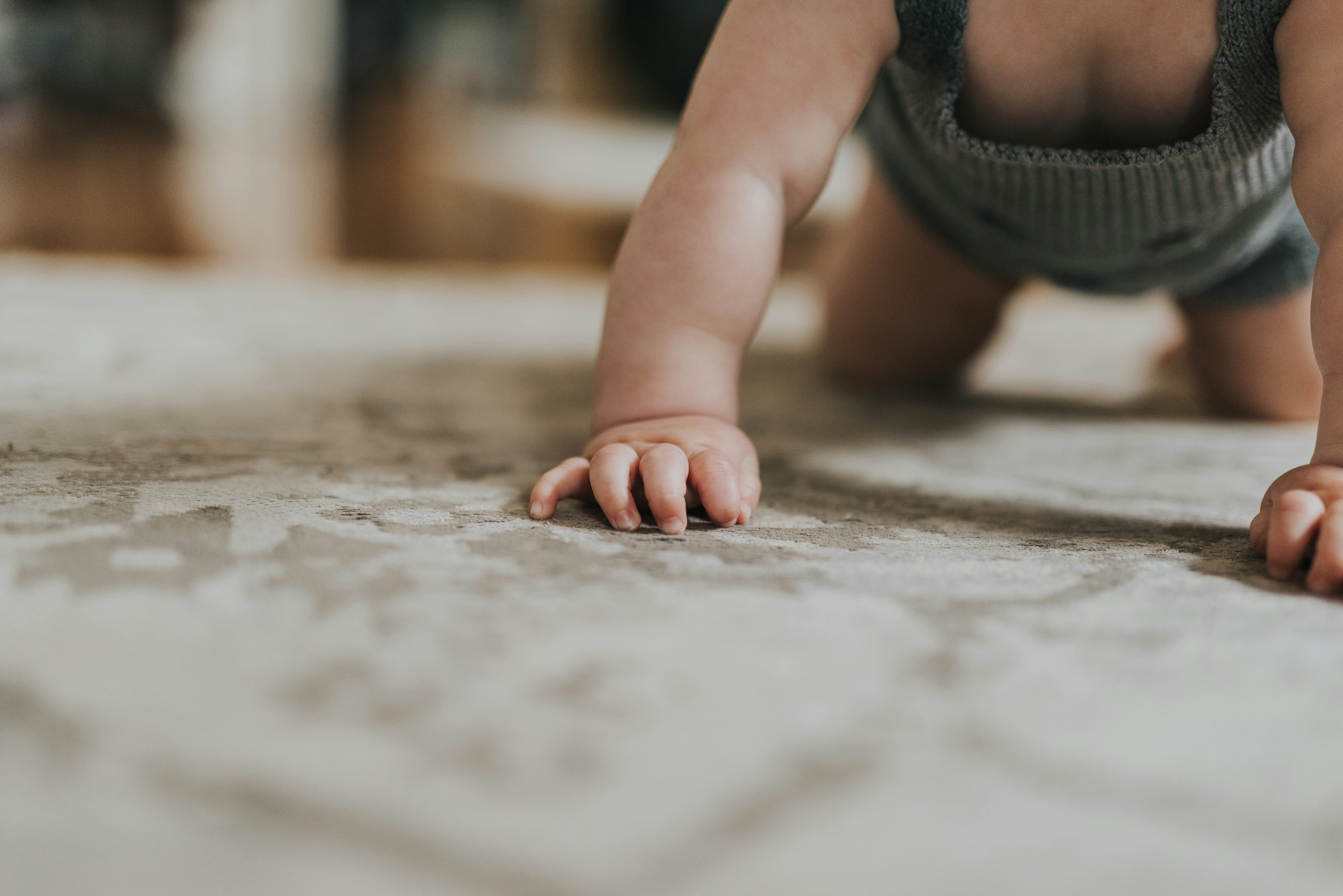When Do Babies Start Crawling?

As soon as your baby is born it can feel like time goes faster than ever. Everyday that goes by you see another sign that your little one is growing. Crawling is one of the first significant milestones in a baby’s development, symbolising their transition to increased mobility and exploration. As your baby grows you may be asking yourself questions such as ‘when do babies start crawling’ and ‘what age do babies crawl’? Therefore, as a parent it’s important to understand the typical timeline for tracking your child’s development and growth.
In this article, we will explore the factors influencing crawling onset, signs of readiness that your little one is about to start crawling, and the average timeline for crawling. We will also cover ways that you can encourage your baby in this development stage.
Factors affecting crawling outset
Muscle Strength and Tone
The development of strong and toned muscles, particularly in the core, shoulders and arms, is crucial for crawling. They will develop these skills gradually as they grow and start to become more mobile. Activities such as grasping, reaching and pulling themselves up will help to encourage this muscle development.
Motor Skills Development
Another considerable factor that affects when babies start crawling is their motor skills development. Fine and gross motor skills play a significant role in a baby's ability to crawl. These skills involve coordination, balance, and spatial awareness, which are achieved through activities such as rolling over, sitting up, and reaching for objects. You could also further facilitate motor skills development by encouraging your little one to play with toys and reach for items.
Individual Variations
It's essential to recognise that each baby is unique, and the onset of crawling can vary widely. While some babies may start crawling as early as six months, others may not begin until closer to ten months. It is important to keep this in mind and not to let concerns of your baby ‘falling behind’ cause you any worry or anxiety. There are a number of factors that can influence when babies start crawling, such as genetics, temperament, and environmental stimuli.
Average Crawling Timeline
While it is essential to understand that every baby is different, there is an average timeline for crawling that can give you some indication of what age babies start to crawl. This timeline typically spans from 6 to 10 months of age, as this is a significant period of development for infants. You’ll find that some babies may show signs of crawling readiness earlier, while some may take a bit longer to start crawling independently.
During this timeframe, babies gradually develop the strength, coordination, and confidence needed to propel themselves forward on their hands and knees. This is a gradual process that often begins with exploration of movement while they lie on their stomachs. Tummy time sessions are the perfect opportunity for your baby to practise this. As your baby becomes more adept at lifting their heads, pushing themselves up with their arms and eventually moving their legs, they will start to experiment with crawling motions.
It’s also important to remember that crawling can appear in different ways. For some infants, crawling may take the form of a traditional hands-and-knees crawl, while others may employ different methods, such as army crawling or scooting on their bottoms. Regardless of the specific technique, the act of crawling represents a crucial step towards greater independence and exploration of their environment.
Signs of Crawling Readiness
It is important that you look out for signs that your baby is ready to start crawling so that you can offer them encouragement and assistance if necessary. Here are some of the most common signs that your baby will soon be attempting to crawl.
Improved Neck and Head Control
Before babies can crawl, they need to have sufficient strength and control over their neck and head. This allows them to lift their head while on their stomach and look around, which is a precursor to crawling. So if you notice them being able to lift their heads on their own and find it easier to move their heads to look at something then crawling could be coming next.
Interest in Moving
As a newborn baby, your little one is pretty restricted in terms of movement. But as they get older they will have more control over their movement and may even start to display curiosity and eagerness to explore their surroundings. This is another of the signs that they’re getting ready to crawl. They may express this interest by reaching for objects just out of reach or trying to move towards them. You may notice this when they’re playing with toys or looking for things they want that aren’t directly near them.
Rocking Back and Forth
Some babies exhibit a rocking motion while on their hands and knees as they prepare to crawl. This rocking helps them gain a sense of balance and rhythm, which are essential for coordinated movement.
Encouraging Crawling
As we stated earlier it is important to remember that every baby is different and the point that they start crawling will vary. So if you have a friend or family member with a baby of the same age, try not to compare their abilities or where they are up to on their growth and development.
But just like anything as a parent, it is important that you try to encourage your little ones to get crawling wherever possible. Positive and fun encouragement can make all the difference. Here are some of our top tips on how you can encourage your baby to start crawling.
Allow for Ample Tummy Time
Incorporating regular tummy time sessions into your baby's daily routine helps strengthen the muscles needed for crawling. Start with short sessions and gradually increase the duration as your baby becomes more comfortable.
Create a Safe Environment
It can feel slightly scary when your baby’s mobility develops and they can get at things that were previously out of reach for them. But baby-proofing your home creates a secure space where your baby can explore and practice crawling without encountering hazards. Remove any potential obstacles or dangers, such as small objects, sharp edges, or stairs. By doing this you’ll feel a lot happier (and calmer) about this new stage of their development.
Avoid Excessive Use of Baby Equipment
While items like walkers and bouncers may seem appealing, excessive use of these devices can actually hinder a baby's natural development, including crawling. Allow your baby plenty of opportunities to explore and move freely without relying too heavily on equipment.
Final Thoughts
Understanding the typical crawling timeline and recognising signs of readiness can help parents support their baby's developmental journey. By providing opportunities for tummy time, creating a safe environment, and allowing babies to explore without excessive reliance on equipment, you can encourage healthy crawling development.
Why not also equip your little explorer with a pair of pre-walker shoes? Made from soft leather to keep tiny toes snug and cosy, baby booties are perfect for those little shufflers who are just getting used to the ground beneath their feet.
Remember, every baby is unique, so it's essential to celebrate their individual milestones and progress at their own pace while bonding and having fun with your little one.
